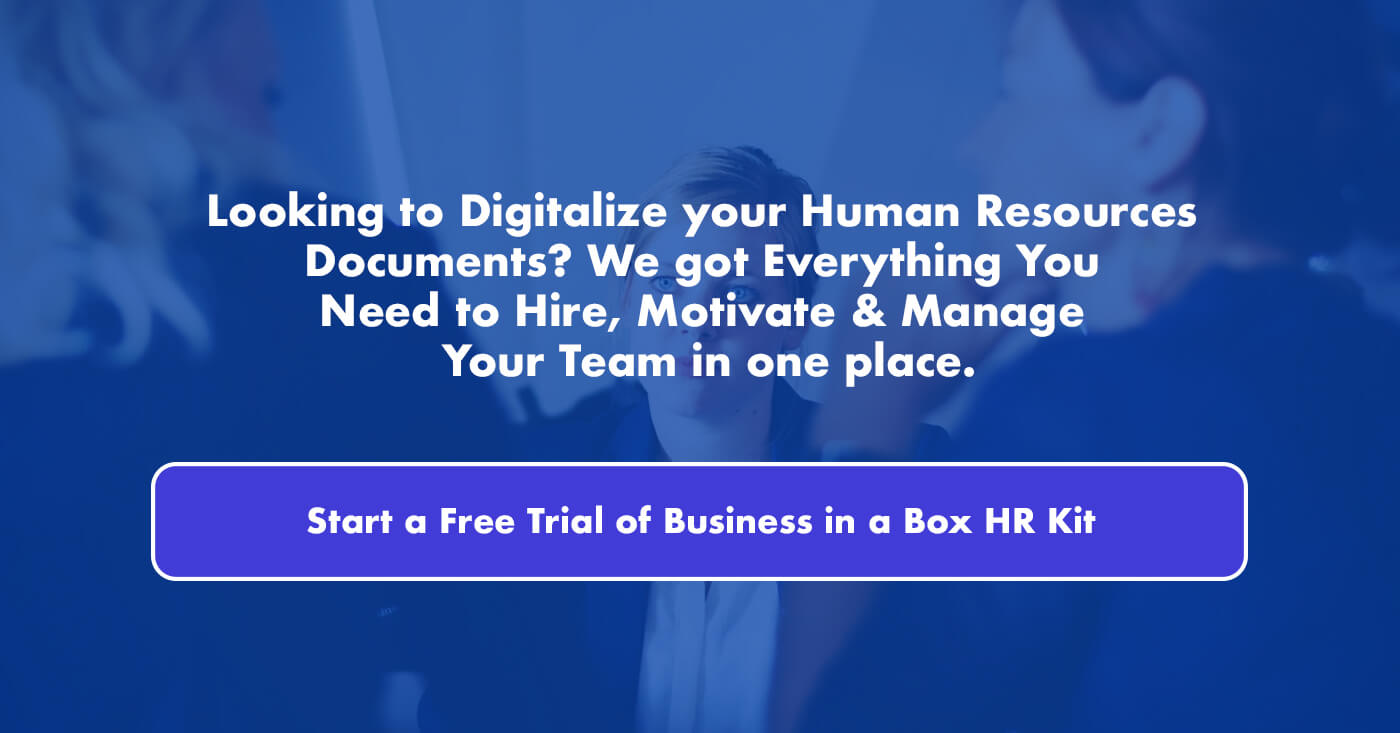Looking to bring your first employee on board? We’ll help you understand the legal requirements of hiring staff so you don’t hit any rough waters down the line.
For months, you’ve operated your new business as lean and mean as possible and continue to wear every hat yourself. Finally, you’ve hit a point–or your breaking point–where, in order to remain competitive and prosper, you’ll need to welcome a helping hand aboard your tight ship.
But before bringing just anyone on board, you need to understand that extra manpower entails a whole new string of legal obligations, liabilities, expenses, and, of course, paperwork. One estimate tallies the average cost of recruiting, hiring, and training a new employee at close to $4,000.
Beyond the red tape, hiring mismatches can result in high turnover, absenteeism, higher healthcare costs, workplace violence, and theft–substantial costs to an organization’s bottom line and reputation.
To help you navigate the legal ramifications of the hiring process, we’ve laid out the steps and precautions you should follow to ensure you make informed decisions while staying within legal and ethical boundaries.
1. Don’t trust your instincts.
Whether your new recruit will be filing reports or configuring computer networks, realize that criminal, under-qualified, and emotionally unstable minds hide in all uniforms and job titles. In reality, nearly 40 percent of all job applications and resumes include bogus or inflated facts. Plus, the number of negligent hiring lawsuits in this country is mounting–if your staff member’s actions hurt someone, you can be held accountable and sued. And with terror acts, corporate scandals, and identity theft on the rise, trusting your gut as a basis to hire is simply unsafe.
So just what do background checks check, and what kind of stuff is off-limits? The search typically consists of confirmation of prior employment claims, determination of worker’s compensation claims and criminal and incarceration records, drug tests, credit history, and driving records. In some cases, an identity (Social Security) check is undertaken.
While much of this information is documented publicly, certain personal records, including education, military, and medical, are confidential and necessitate an applicant’s consent before digging them up. If you can, you should try to obtain original educational credentials. With advances in technology, a manufactured diploma or degree is as simple as typing in a few keystrokes.
When prying into an interviewee’s possible criminal past, take note: While a criminal conviction can be reported indefinitely, arrest records, paid tax liens, and accounts placed for collection, civil suits, and judgments can’t be included in an employment background check after seven years. In some states, more stringent reporting rules apply. In California, for example, bankruptcies are off-limits after ten years.
If you plan to farm out a fact-finding hunt to a third party, you’re required by federal law to alert the person who’s under investigation in writing. You must also notify the applicant if he or she is being denied a position due to disparaging information you’ve uncovered, and give him or her a chance to refute that information.
Be forewarned, however: The internet is loaded with scam artists and private companies that compile “virtual rap sheets.” What such online brokers dish up isn’t always accurate or current, and the low rates they advertise may be deceptive.
Each of the following firms is established in this arena and has been in existence for thirty years or more:
Understand that the more jurisdictions you want to search, the more you’re likely to pay.
2. Test for illegal substances.
With more than 250,000 drug- and alcohol-related deaths a year nationwide, our society’s battle against substance abuse is far from over. Whether cocaine or sleeping pills are the drugs of choice, addicts can be a terrible drain on an organization’s productivity and balance sheet. Did you know that 65 percent of on-the-job accidents are related to substance abuse? And drug-abusing employees are six times more likely to file worker’s compensation claims than other staff members.
To weed out such weak links from your work environment, pre-employment and random drug testing are an employer’s best lines of defense. Some occupations actually mandate such checks, including industrial tractor and truck operators, material movers, child-care workers, teachers, private and corporate investigators, state and federal personnel, and police officers.
Before instituting a drug exam of your own, bear in mind, during pre-employment interviews, it’s illegal to inquire about a candidate’s prescription medication use. However, if an applicant refuses a drug test, an employment offer can be denied or retracted.
3. Screen for unwanted behavior.
Depending on the position you’re trying to fill, there are supplementary screening options available. Psychological testing, handwriting analysis, skill and aptitude tests, and even lie detector tests are additional assessment tools that business owners exercise today to help them select the best job candidates. Such profiling allows you to select people who have the skills and the temperament needed to succeed in your business. To avoid any legal problems, before administering such tests, be prepared to demonstrate job-relatedness, non-discrimination, and statistical validity.
Go Deeper: Onboarding Best Practices, How the Smartest Companies Turn New Hires Into Great Employees
Time to Hire
Once you’ve completed your behind-the-scenes evaluation and have turned up some promising candidates, you’ll need to know the dos and don’ts of interviewing someone face to face.
1. Some questions are off-limits.
Whether on a written employment application or in person, it’s unlawful to ask about an applicant’s age, sexual orientation, marital status, religious affiliation, or race. And questions pertaining to the nature of a physical, emotional, or mental handicap can only be asked if an applicant will need special accommodations for performing a specific job.
During your dialogue, you should also be mindful of other important federal laws including:
- Title VII of the Civil Rights Act of 1964, covers the subject of discrimination or harassment on the basis of race, religion, sex, or creed
- The Age Discrimination in Employment Act of 1967
- The Americans with Disabilities Act of 1990
- The Family Medical Leave Act of 1993
For more information on each of the federal laws noted above, visit the sites for the U.S. Department of Labor, the Equal Employment Opportunity Commission and MyEmploymentLawyer.com .
2. Check references.
Before making a formal job offer, be sure to ask the contender for at least three references. Two of the references should be professional, and one should be personal to help endorse the character of the applicant. Then pick up the phone and call those references–do not neglect this step! You’d be surprised what references are willing to tell you about an applicant if you’d only ask.
Be sure to keep your queries as objective as possible, and, if you’re speaking to the professional references, make sure they relate directly to the candidate’s job performance and duties and to information provided on the application or resume, or to information provided during the interview. Forms of discrimination that apply to interviewing and hiring are also applicable to reference checking, so be sure to avoid questions that involve race, age, disabilities, national origin, religion, or marital status. For a personal reference, find out how long they’ve known the person and then ask about the person’s character and work ethic; you might also ask if the person would hire the applicant themselves if they had an appropriate job opening to fill.
3. Set a salary and choose the employee’s classification.
When it comes to paying and classifying a new employee, federal laws provide clear guidelines when it comes to both. The minimum wage currently stands at $5.15 per hour–that’s the lowest you can go when it comes to paying hourly wages. And if it’s a young person you’re putting on your books, the Fair Labor Standards Act sets the minimum age for employment in non-agricultural employment at 14 years old.
Depending on your hiring needs and finances, you’ll need to determine the status of your new employee as being part-time or full-time. According to the U.S. Department of Labor, part-time workers are those who work 20 hours or less per week, while full-timers log in 30 hours or more. Because states differ on the payment of benefits to part-time employees, you should check corresponding regulations with your local department of labor.
For tax reasons, you must categorize your worker as an independent contractor, common-law employee, statutory employee, or statutory nonemployee. Misclassification can result in fines equal to one-and-a-half percent of the questionable wages, plus the withholding taxes. Criminal charges can apply as well.
As long as you retain the right to control their activities (such as when and where the person works, the tools and equipment they use, and where they purchase supplies), your workers are considered common-law employees.
A statutory employee is one who’s an employee by statute and is allowed to report income and expenses as a business. The most common employees in this category are its officers, but it also includes such employees as:
- A full-time traveling salesperson who solicits orders from wholesalers, restaurants, or similar establishments on behalf of the company. The merchandise sold must be for resale (for example, food sold to a restaurant) or for supplies used in the buyer’s business.
- An agent-driver or commission-driver engaged in distributing meat, vegetables, bakery goods, beverages (other than milk), or laundry or dry cleaning services
- A homeworker performing work on material or goods furnished by the employer
A statutory nonemployee, which includes direct sellers and licensed real estate agents, is treated as self-employed for all federal tax purposes, including income and employment taxes.
An independent contractor works for himself or herself, often for more than one company. This person typically works offsite, is paid on a per-job or commission basis, and sends invoices for his or her services. Employers aren’t required to deduct taxes on their behalf or extend them the same benefits that they do for standard employees. This also applies to freelancers and consultants. For tax purposes, it’s a good idea to draft an agreement with an independent contractor, stating that he or she is not an employee.
4. Get your records straight. Before your newest team member logs in a single hour of work, there’s a folder’s worth of records you’ll need to complete and process. According to the U.S. Department of Labor, there are 12 records an employer must maintain on each member of their staff for the length of their employment:
- Employee’s full name and social security number
- Mailing address, including ZIP code
- Birthdate, if the employee is younger than 19
- Sex and occupation
- Time of day and day of the week when employee’s workweek begins, hours worked each day, and total hours worked each workweek
- The basis on which employee’s wages are paid (weekly, bi-monthly, and so on)
- Regular hourly pay rate
- Total daily or weekly “straight time” earnings for each workweek
- Total overtime earnings for each workweek
- All additions to or deductions taken from employee’s wages
- Total wages paid each pay period
- Date of payment and the pay period covered by each payment
When it comes to filing taxes, you’ll also want to make sure your paperwork’s in order. Here’s a list of the taxes you’ll need to shell out and the related documents you’ll need to file as an employer, according to the Internal Revenue Service :
- A W4 form to withhold the proper amount of federal income tax from a full- or part-time employee’s pay, once a year to your state and federal governments
- A W2 form to the Social Security Administration and a share of a full- or part-time employee’s Social Security payroll taxes (FICA) once a year to your state and federal governments
- An I-9 Employment Eligibility Verification form for every new hire
- Taxes on 1099 workers (independent contractors) either quarterly or once a year to the federal government
- The same forms must also be submitted to your state’s department of labor or taxation
- Proof of worker’s comp insurance. Such a policy indemnifies a business against its legal liabilities for accidental or fatal injuries sustained by employees during working hours. Although this is required by federal law, the administration of this benefit is at the state level.
- State and federal unemployment taxes, but only if (1) they pay wages to employees totaling $1,500 or more in any quarter of a calendar year, or (2) they employed at least one person during any day of the week during any 20 weeks in a calendar year, regardless of whether or not the weeks were consecutive. In some states, this is tied to a worker’s status as part-time or full-time, but you should contact your state workforce agency to learn the exact requirements.
5. Handle your immigration issues carefully.
With roughly 10 million undocumented immigrants living in America, obviously, this segment of the population has become a major factor in our workforce. If you’re sponsoring or petitioning a foreign national to work here, you must verify and send in documents proving his or her eligibility to do so here.
To avoid civil and criminal penalties and audits to your company payroll, you must also file an I-140 form (Immigrant Petition for Alien Worker) on his or her behalf with the U.S. Citizenship and Immigration Service (USCIS). An Employment Authorization Document, also known as an I-9 check, must accompany such credentials.
There are additional, specialized classification forms to fill out, depending on what type of work the foreign national will be doing. For more on this process and an employer’s obligations, contact the USCIS.
6. Get the right insurance coverage.
While only Puerto Rico, California, Hawaii, New Jersey, New York, and Rhode Island require employers to provide income to disabled employees who get hurt off the job, many experts advise buying disability (or loss of income) insurance for yourself and key employees from the get-go.
There are two basic types of disability coverage: short term (which covers anywhere from 12 weeks to one year), and long term (which covers anything over a year). An important component of disability coverage is the waiting period before benefits are paid. For short-term disability, an employee will generally have to wait seven to 14 days. For long-term disability, an employee will wait anywhere from 30 days to one year. If having an employee laid up for a limited period of time wouldn’t seriously jeopardize your business, you can decrease your premiums by choosing a longer waiting period.
Well that’s it–the basics of legally becoming someone else’s boss. While you may be intimidated by the scope of your new role, remember why you went solo in the first place. There’s a price to pay for investing in your own destiny.
Hopefully, your outlay will be eclipsed by productivity and profit! Happy hunting!
→ Click here to download our Hiring Policy Template.

























